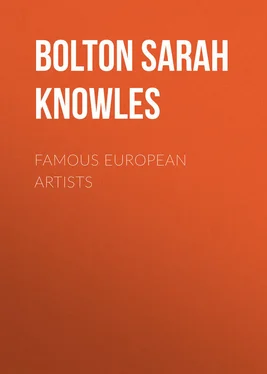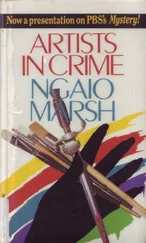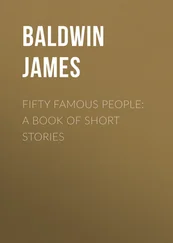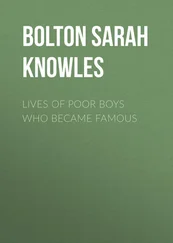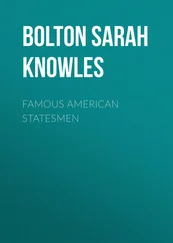Sarah Bolton - Famous European Artists
Здесь есть возможность читать онлайн «Sarah Bolton - Famous European Artists» — ознакомительный отрывок электронной книги совершенно бесплатно, а после прочтения отрывка купить полную версию. В некоторых случаях можно слушать аудио, скачать через торрент в формате fb2 и присутствует краткое содержание. ISBN: , Жанр: foreign_prose, foreign_antique, foreign_language, на английском языке. Описание произведения, (предисловие) а так же отзывы посетителей доступны на портале библиотеки ЛибКат.
- Название:Famous European Artists
- Автор:
- Жанр:
- Год:неизвестен
- ISBN:http://www.gutenberg.org/ebooks/39380
- Рейтинг книги:5 / 5. Голосов: 1
-
Избранное:Добавить в избранное
- Отзывы:
-
Ваша оценка:
- 100
- 1
- 2
- 3
- 4
- 5
Famous European Artists: краткое содержание, описание и аннотация
Предлагаем к чтению аннотацию, описание, краткое содержание или предисловие (зависит от того, что написал сам автор книги «Famous European Artists»). Если вы не нашли необходимую информацию о книге — напишите в комментариях, мы постараемся отыскать её.
Famous European Artists — читать онлайн ознакомительный отрывок
Ниже представлен текст книги, разбитый по страницам. Система сохранения места последней прочитанной страницы, позволяет с удобством читать онлайн бесплатно книгу «Famous European Artists», без необходимости каждый раз заново искать на чём Вы остановились. Поставьте закладку, и сможете в любой момент перейти на страницу, на которой закончили чтение.
Интервал:
Закладка:
Famous European Artists
PREFACE
Hermann Grimm says, "Reverence for what is great is a universal feeling… When we look at great men, it is as if we saw a victorious army, the flower of a people, marching along… They all speak one common language, know nothing of castes, of noble or pariah; and he who now or in times to come thinks or acts like them rises up to them, and is admitted into their circle."
Possibly, by reading of these great men some may be led to "think and act like them," and thus "be admitted into their circle." All of these possessed untiring industry and a resolute purpose to succeed. Most were poor in early life.
S. K. B.MICHAEL ANGELO
Who has ever stood in Florence, and been warmed by her sunlight, refreshed by her fragrant flowers, and ennobled by her divine art, without saying with the poet Rogers, —
"Of all the fairest cities of the earth,
None is so fair as Florence. 'Tis a gem
Of purest ray; and what a light broke forth
When it emerged from darkness! Search within,
Without, all is enchantment! 'Tis the Past
Contending with the Present; and in turn
Each has the mastery."
Pitiful in her struggles for freedom, the very centre of art and learning in the fifteenth century, she has to-day a charm peculiarly her own.
"Other though not many cities have histories as noble, treasures as vast; but no other city has them living, and ever present in her midst, familiar as household words, and touched by every baby's hand and peasant's step, as Florence has.
"Every line, every road, every gable, every tower, has some story of the past present in it. Every tocsin that sounds is a chronicle; every bridge that unites the two banks of the river, unites also the crowds of the living with the heroism of the dead.
"The beauty of the past goes with you at every step in Florence. Buy eggs in the market, and you buy them where Donatello bought those which fell down in a broken heap before the wonder of the crucifix. Pause in a narrow by-street in a crowd, and it shall be that Borgo Allegri, which the people so baptized for love of the old painter and the new-born art. Stray into a great dark church at evening time, where peasants tell their beads in the vast marble silence, and you are where the whole city flocked, weeping, at midnight, to look their last upon the dead face of their Michael Angelo. Buy a knot of March anemones or April arum lilies, and you may bear them with you through the same city ward in which the child Ghirlandaio once played amidst the gold and silver garlands that his father fashioned for the young heads of the Renaissance. Ask for a shoemaker, and you shall find the cobbler sitting with his board in the same old twisting, shadowy street-way where the old man Toscanelli drew his charts that served a fair-haired sailor of Genoa, called Columbus."
Florence, Shelley's "Smokeless City," was the ardently loved home of Michael Angelo. He was born March 6, 1475, or, according to some authorities, 1474, the Florentines reckoning time from the incarnation of Christ, instead of his birth.
Lodovico Buonarotti, the father of Michael Angelo, had been appointed governor of Caprese and Chiusi, and had moved from Florence to the Castle of Caprese, where this boy, his second child, was born. The mother, Francesca, was, like her husband, of noble family, and but little more than half his age, being nineteen and he thirty-one.
After two years they returned to Florence, leaving the child at Settignano, three miles from the city, on an estate of the Buonarottis'. He was intrusted to the care of a stone-mason's wife, as nurse. Living among the quarrymen and sculptors of this picturesque region, he began to draw as soon as he could use his hands. He took delight in the work of the masons, and they in turn loved the bright, active child. On the walls of the stone-mason's house he made charcoal sketches, which were doubtless praised by the foster-parents.
Lodovico, who was quite too proud for manual labor, designed that his son should become a dealer in silks and woollens, as probably he would thus amass wealth. With such a project in mind, he was certainly unwise to place the child in the exhilarating air of the mountains, where nature would be almost sure to win him away from the counting-room.
When the boy was old enough he was sent by his father to a grammar school in Florence, kept by Francesco of Urbino, a noted grammarian. He made little progress in his studies, for nearly all of his time was spent in drawing and in visiting the ateliers of the different artists of the city. Vasari says he was beaten by his father and other elders; but the beatings did no good, – indeed, they probably made the quiet, self-poised lad more indifferent to trade and more devoted to art.
Fortunately, in these early years, as has so often happened to men of genius, Michael Angelo found a congenial friend, Francesco Granacci, a talented youth of good family, lovable in nature, and a student in art. He was a pupil of one of the best painters in Italy, Domenico Ghirlandaio. He loaned drawings to Michael Angelo, and made the boy of fourteen more anxious than ever to be an artist.
Lodovico at last saw that a lad so absorbed in art would probably be a failure in silk and wool, and placed him in the studio of Ghirlandaio, with the promise of his receiving six gold florins the first year, eight the second, and ten the third.
Granacci, who was nineteen, and Michael Angelo now worked happily together. The master had undertaken to paint the choir of the Church of Santa Maria Novella, and thus the boys were brought into important work.
One day, when the painters were absent, Michael Angelo drew the scaffolding, with all who worked on it, so perfectly that Ghirlandaio exclaimed, when he saw it: "This youth understands more than I do myself." He also corrected one of the master's drawings, the draped form of a woman. Sixty years afterwards, when this sketch was shown to Michael Angelo, he said, "I almost think that I knew more art in my youth than I do in my old age."
The young artist now painted his first picture, a plate of Martin Schöngauer's of Germany, representing St. Anthony tormented by devils. One pulls his hair, one his garments, one seizes the book hanging from his girdle, one snatches a stick from his hand, while others pinch, and tease, and roll over him. Claws, scales, horns, and the like, all help to make up these monsters. Michael Angelo went to the fish-market, and carefully studied the eyes and scales of the fish, with their colors, and painted such a picture that it was mistaken for the original.
After a year spent with Ghirlandaio, the master seems to have become envious, and the three-years' contract was mutually broken, through a fortunate opening for Michael Angelo. Cosmo de' Medici, "Pater Patriæ," had collected ancient and modern sculptures and paintings, and these art treasures were enriched by his grandson, Lorenzo the Magnificent, who opened them to students, with prizes for the best work. He founded an academy and placed it under the charge of Bertoldo, the favorite disciple of Donatello.
Lorenzo made himself the idol of the people by his generosity, consideration, and unquestioned ability to lead. He arranged public festivities, and wrote verses to be sung by girls as they danced in the public square, in the month of May. All the young people knew and loved him.
On one of these festive occasions, when the triumphal procession of Paulus Æmilius was being represented, Granacci found an opportunity of winning Lorenzo's favor, and thereby gained access to the art treasures. At once he thought of his friend, and Michael Angelo was soon studying the marbles and pictures of the great Medici.
Читать дальшеИнтервал:
Закладка:
Похожие книги на «Famous European Artists»
Представляем Вашему вниманию похожие книги на «Famous European Artists» списком для выбора. Мы отобрали схожую по названию и смыслу литературу в надежде предоставить читателям больше вариантов отыскать новые, интересные, ещё непрочитанные произведения.
Обсуждение, отзывы о книге «Famous European Artists» и просто собственные мнения читателей. Оставьте ваши комментарии, напишите, что Вы думаете о произведении, его смысле или главных героях. Укажите что конкретно понравилось, а что нет, и почему Вы так считаете.
